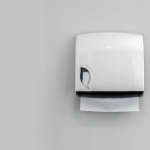Choosing the Right Area Rug for Your Home
Warning: Undefined variable $post in /home/dietofli/public_html/wp-content/plugins/code-snippets/php/snippet-ops.php(584) : eval()'d code on line 3
Warning: Attempt to read property "ID" on null in /home/dietofli/public_html/wp-content/plugins/code-snippets/php/snippet-ops.php(584) : eval()'d code on line 3
The estimated reading time is 5 minutes
Warning: Undefined variable $post in /home/dietofli/public_html/wp-content/plugins/oxygen/component-framework/components/classes/code-block.class.php(115) : eval()'d code on line 3
Warning: Attempt to read property "ID" on null in /home/dietofli/public_html/wp-content/plugins/oxygen/component-framework/components/classes/code-block.class.php(115) : eval()'d code on line 3
Choosing an area rug for your home is an important step. There are different types of rugs, and the type of rug and the size largely help determine the cost. The way the rug is made, how much labor is involved along with the materials is all interconnected. The more complex the rug and the method the greater the cost.
These types of rugs can be broken down into a few key categories.
- Hand Knotted or Persian Rugs
- Hand Loomed and Flat Weave
- Hand Tufted Rugs
- Hand Hooked Rugs
- Flatweave Rugs
- Programmed Rugs
Selecting the right type of rug is just the first step though. Visit a local rug retailer, and ask to see the differences so that you understand how they lay and the differences in durability, and how they wear.
Then move on to the other questions involved with choosing the right area rug for your home.(1)
Location, Location, Location
Where you will put your rug has a large bearing on what type you want. In the entryway to your home, you may want a lower pile rug and one that is less likely to hold dirt and easier to clean. In the living area, you may want something a little more comfortable, and in the dining area something more stain resistant.
The location of your rug determines the kind of use it will get. This also determines how easy it will be to clean, how often it gets vacuumed, and the kind of vacuum you need to keep it looking new. Just like the carpet in your home, you will need to clean area rugs frequently, and the type of cleaning you need might also be a deciding factor.
Size Matters
The next question becomes what size rug you need. This will vary depending on the area you are working with and how you want the rug to sit. Will there be furniture on the corners, in the center, and on the edges? Will this be a hall runner for people to walk on? Will it be in a high-traffic area or one where people sit? Will the edges pose a tripping hazard?
The rule of thumb is that you want to leave a border around the area rug where the flooring it sits on shows through. The size of this border space largely depends on location and what furniture will sit on the rug itself. This brings us to the next point for you to consider.
Arrangement Matters
How will the furniture on the rug or around it be arranged? Most often, furniture is on corners, like chairs and sofas. They will overlap the edge of the rug, but not sit fully on or off of it. The exception is dining room tables or beds.
In the case of the dining room table, things are usually centered on the rug, which means you need a larger rug than normal in these areas, ones much larger than the table overall. The rug needs to have room for the chairs to scoot in and out of the table without catching on the edge of the rug.
In a bedroom, the rug usually either sits all the way under the bed, or it sits so that the end tables are off the rug, and it extends beyond the bottom of the bed. This partly depends on how much space is in the bedroom, and how large a walkway there is at the foot of the bed. It also depends on if the bed is up against a wall or centered in the room. (2)
There are several ways to arrange rugs, and there are no single correct answers. Look around at the way others are using rugs, and be creative.
Comfort Levels
With each different type of rug listed above, there are different comfort levels. These levels vary from a thinner rug that sits on a hardwood floor and has a little cushion to a plush, hand-knotted rug that offers a great deal of comfort underfoot.
This partly depends on the type of rug, but also partly on the material it is constructed from. Cotton and other fabrics will be more comfortable, while polyester and other blends will be less expensive but also less comfortable.
The question to ask is how much time you will be actually spending with your feet on the rug. In the living room, this might be a lot. If the rug is a runner in the hallway, you might only be on it for a few steps between each room. You will have to decide for yourself the level of comfort you need in each space.
Check Your Budget
The type of rugs and differing materials vary a great deal in cost. Labor-intensive hand-knotted rugs can be very expensive depending on the size. Programmed rugs can be much less expensive, but also less durable and made with less expensive materials.
The question, beyond comfort, is to ask yourself how much you are willing to spend to enhance that area in your home. The more you spend, the better the materials. The rug will look better, wear better, and lay better.
Selecting the right rug for your home is a personal choice, and there are several factors to consider. From the type to size, cost, and location and what you can afford to spend, making the right decision is one you should take your time to consider. You will be living with that choice for years to come.














